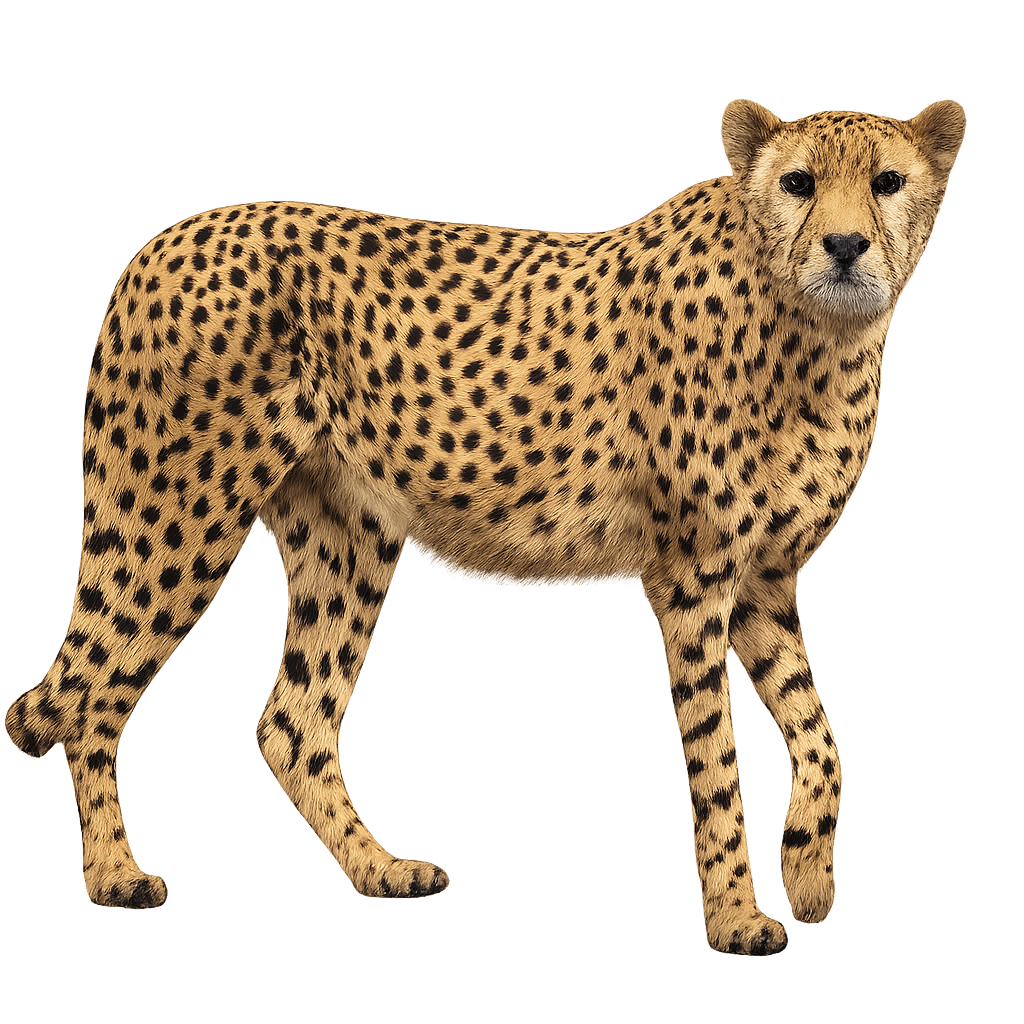Your wildlife photography guide.
Explore the cheetah in detail, study its behavior, prepare your shots.
Where to observe and photograph the cheetah in the wild
Learn where and when to spot the cheetah in the wild, how to identify the species based on distinctive features, and what natural environments it inhabits. The WildlifePhotographer app offers tailored photography tips that reflect the cheetah’s behavior, helping you capture better wildlife images. Explore the full species profile for key information including description, habitat, active periods, and approach techniques.
Cheetah
Scientific name: Acinonyx jubatus

IUCN Status: Vulnerable
Family: FELIDAE
Group: Mammals
Sensitivity to human approach: Suspicious
Minimum approach distance: 60 m
Rut period: January to June
Gestation: 90-95 jours
Births: April to October
Habitat:
Open savannas and grassy plains
Activity period :
Primarily active during the day, with peak activity in the morning and late afternoon.
Identification and description:
The Cheetah is a large feline known for its exceptional speed, making it the fastest land mammal. It measures about 1.1 to 1.5 meters in length, with a shoulder height of around 75 cm, and weighs between 40 and 65 kg. Its coat is short, golden to light brown with distinct black spots, allowing it to blend effectively in the savannas. It has a round head with large nostrils, sharp eyes, and distinctive black tear marks on its cheeks, which help it focus its vision while hunting. The Cheetah primarily inhabits sub-Saharan Africa, with small populations in Iran, in open habitats such as savannas, grasslands, and deserts. Carnivorous, it mainly feeds on gazelles, springboks, and other small animals. Unlike other large cats, the Cheetah hunts using speed rather than brute strength. It can reach speeds of 100 to 110 km/h in a few seconds, but this speed can only be maintained for short distances. Although the Cheetah is not critically endangered, it faces threats like habitat loss, poaching, and reduced natural prey.
Recommended lens:
300 mm – adjust based on distance, desired framing (portrait or habitat), and approach conditions.
Photography tips:
Stay in the vehicle: During 4x4 safaris, it’s important to remain in the vehicle to avoid disturbing the animals. Do not exit the vehicle, even for a better view.
Use a long telephoto lens: A 400mm lens or more is essential for capturing sharp images without getting too close, which could disturb the animals.
Be ready for action: Cheetahs are fast, and their hunting moments are brief. Make sure your camera is ready, with quick autofocus and settings suited for high-speed action.
Make use of soft light: Morning or afternoon light is ideal for avoiding harsh shadows and ensuring well-lit, sharp photos. The hours around sunrise and sunset are perfect for photographing.
Respect distances: Even in a vehicle, always maintain safe distances from animals. This ensures quality photos while keeping both you and the animal safe.
Follow the rules: On safaris, always follow the rules of conduct and conservation. Never try to provoke or disturb the animals for a better shot. Observation should be as respectful as possible to preserve their natural behavior and habitat.
The WildlifePhotographer App is coming soon!
Be the first to explore the best nature spots, track rutting seasons, log your observations, and observe more wildlife.
Already 1 449 wildlife lovers subscribed worldwide

